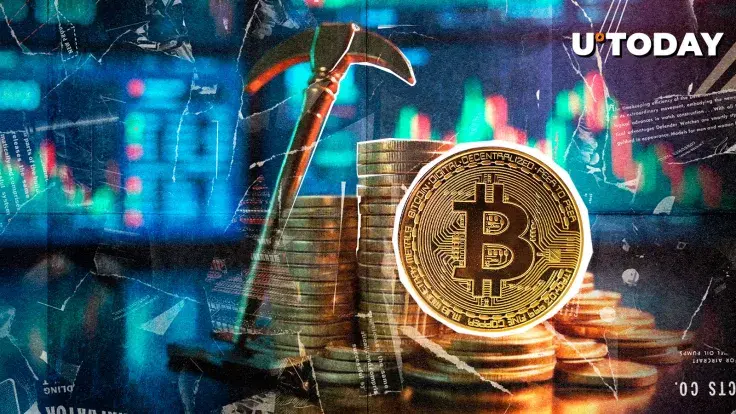
What is Bitcoin mining?
Bitcoin mining serves two main functions: securing transactions and introducing new Bitcoins into circulation. Miners use specialized hardware to solve complex cryptographic puzzles set by the network's difficulty algorithm.
When a miner successfully solves this puzzle, they earn the right to add a new block of verified transactions to the blockchain, and they receive a reward in newly generated Bitcoins.
The reward system incentivizes miners to contribute to the network’s integrity and security, as they compete to be the first to solve each cryptographic problem. This competition continues until Bitcoin’s supply cap of 21 million coins is reached.
Once that limit is achieved, miners will no longer receive new Bitcoins as rewards. Instead, they’ll earn transaction fees paid by users, which is expected to sustain the network in the absence of new coin issuance.
What is Bitcoin hashrate?
Bitcoin hashrate measures the total computational power that miners contribute to the network, reflecting the number of hash calculations made per second to validate transactions and secure the blockchain.
Higher hashrate generally signals increased network security, as it becomes more challenging for any single entity to alter or attack the blockchain. The network’s hashrate is influenced by factors such as mining difficulty adjustments and block time, which help keep the Bitcoin network stable and secure.
Since Bitcoin's fourth halving in April 2024, the hashrate has reached record highs, and Bitcoin's price has grown by around 4% as of early November. This halving cut mining rewards from 6.25 to 3.125 BTC per block, reducing miners’ earnings per block mined, while their operating costs, such as energy and equipment expenses, have remained the same.
Despite these tighter profit margins, the rise in hashrate suggests increasing miner interest, often seen as a bullish sign. Higher hashrates mean more miners are competing, adding security and robustness to the network.
This competitive surge may be incentivized by the moderate price increase post-halving. As Bitcoin's price continues to climb, mining becomes more lucrative, potentially encouraging further hashrate growth and bolstering network security.
At the moment, the Bitcoin hashrate is at an all-time high.
BTC mining difficulty
Bitcoin mining difficulty represents the level of computational challenge that miners face to validate transactions and add a new block to the blockchain. The network automatically recalibrates this difficulty roughly every two weeks to maintain a consistent block time of approximately 10 minutes, regardless of fluctuations in the total hashrate.
The latest reading, highlighted by CryptoQuant’s CEO Ki Young Ju, has surpassed 101.6 trillion (T), marking a return to peak difficulty levels.
This growth in difficulty ensures a steady issuance of new Bitcoins by preventing an oversupply or undersupply of coins, as the difficulty will drop when miners leave the network due to unfavorable market conditions.
Initially, Bitcoin's mining difficulty was just one, allowing it to be mined with a standard personal computer. However, as more participants joined the network, competition surged, and difficulty increased significantly.
Over the last three years, it has grown from 21.6 trillion to over 95.67 trillion, reflecting the rapid expansion of Bitcoin’s mining ecosystem.
The harder it is to mine one block, the scarcer Bitcoin emissions will be. This will directly impact the circulating supply, which, if matched with higher demand, might trigger a price rally.



 Dan Burgin
Dan Burgin Vladislav Sopov
Vladislav Sopov U.Today Editorial Team
U.Today Editorial Team